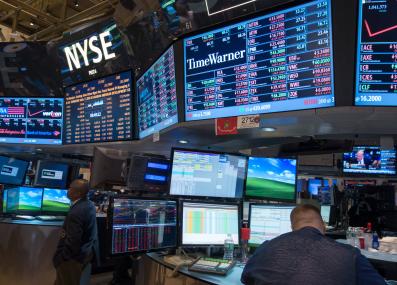Have a question?
How much do government subsidies affect the price of fossil fuel energy? How about renewable energy?
Subsidies make energy cheaper for almost everyone. Worldwide, they mostly favor fossil fuels, but that's changing.
April 17, 2024
The price an ordinary citizen pays for energy, whether it is a gallon of gasoline or a kilowatt-hour of electricity, almost never reflects the full cost of creating and delivering it. That’s because governments around the world subsidize both fossil fuel and renewable energy production, says Pablo Duenas-Martinez, a research scientist at the MIT Energy Initiative.
These subsidies have a huge impact on energy prices and on what kinds of energy are used.
Governments have many reasons to subsidize energy, Duenas-Martinez says, and a variety of levers for controlling its price. “Energy is one of the main drivers of economies, and as soon as you get a spike in prices of energy—particularly when you are not the one producing them—immediately there is an impact on the economy.” A country may place a price cap on energy to fix the price for consumers, he says, which can help to stem financial crises or civil unrest when the price of energy spikes.
Nations that don’t engage in such price-fixing may use other methods, such as laws that subsidize domestic energy production or require that the country store a minimum amount of a fuel like coal, which props up the fossil fuel. Governments use tax rebates and credits, too, Duenas-Martinez says. The ongoing Ukraine-Russia war, for example, has led to spikes in energy prices, and some truck and taxi drivers in parts of Europe can get a tax rebate to offset their higher spending on gasoline.
The combined effect is profound. Estimates vary, but governments worldwide certainly spend hundreds of billions of dollars a year subsidizing fossil fuels, and perhaps over a trillion.1,2,3 (Those totals don’t include pricing “externalities,” such as putting a dollar figure on fossil fuels’ planet-warming climate pollution, which according to the International Monetary Fund would add many more trillions.4)
Inevitably, these subsidies lead to more burning of fossil fuels and more of the climate pollution these fuels create.
Of course, renewable energy is subsidized, too. In this case, the motivation is typically to level the playing field and help this non-climate-polluting energy become more cost-competitive. Subsidies can take the form of investments in research and development, or tax credits for utilities that supply clean power or people who buy electric vehicles—all of which the Biden Administration in the U.S. has passed into law as part of its climate initiatives. Countries can also require that a certain percentage of energy comes from renewable sources, or set price controls to keep the costs of renewables down.
According to a report by the International Renewable Energy Agency, government support for fossil fuels still reigned as of 2017: they garnered 70 percent of energy subsidies that year worldwide, with only 20 percent for renewables.3 In the United States, though, the numbers are flipped. The Energy Information Administration says half of the federal money spent to subsidize energy from 2016 to 2022 went to renewables, while less than 15 percent went to oil, gas, and coal.5 And that doesn’t include tens of billions of dollars per year in clean energy tax credits from 2022’s Inflation Reduction Act.
(What about the roughly one-third of U.S. subsidies that supported neither fossil fuels nor renewables? Most of them went to “end use,” like home heating credits that lower people’s heating bills whether they’re using climate-polluting gas or clean renewable electricity. These mostly have the effect of leading people to use more energy of whatever kind.)
For solar panels and onshore winds farms, Duenas-Martinez says, heavy subsidies are accomplishing their goals. Those two renewables are now competitive with fossil fuels in most places, giving people a way to produce and use clean energy without paying higher energy bills. Not so for other renewable technologies such as geothermal and offshore wind, which still need more government support to compete.
In the end, energy subsidies are always about what a country values, and what it wants to promote. With big fossil fuel subsidies, “what you're providing is a wrong price signal to the consumer,” Duenas-Martinez says, and removing the incentive to use cleaner energy. “When consumers are not facing the real price, they tend to consume more. So what you are basically doing is feeding inefficient behavior.”
Submit your own question to Ask MIT Climate
Get the latest from Ask MIT Climate monthly in your inbox
1 International Energy Agency: "Energy Subsidies." Accessed April 17, 2024.
2 International Institute for Sustainable Development: "Doubling Back and Doubling Down: G20 scorecard on fossil fuel funding." November 2020.
3 International Renewable Energy Agency: "Energy subsidies: Evolution in the global energy transformation to 2050." April 2020.
4 International Monetary Fund: "IMF Fossil Fuel Subsidies Data: 2023 Update." August 24, 2023.
5 U.S. Energy Information Administration: "Federal Financial Interventions and Subsidies in Energy in Fiscal Years 2016–2022." August 2023.









